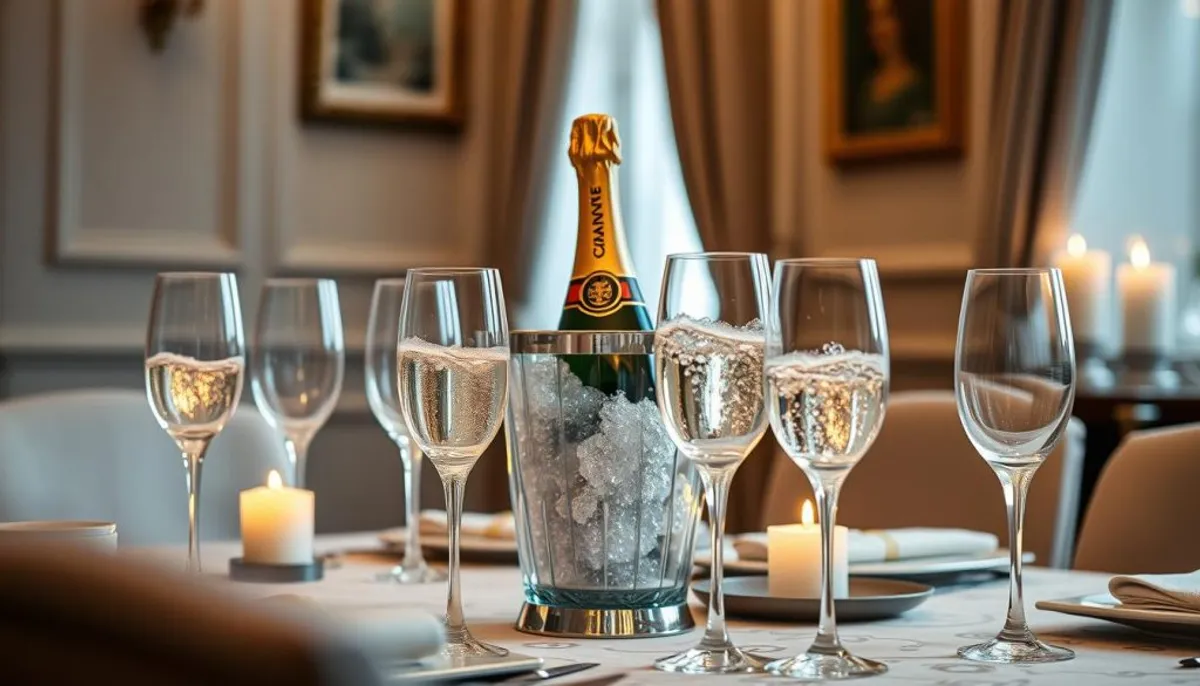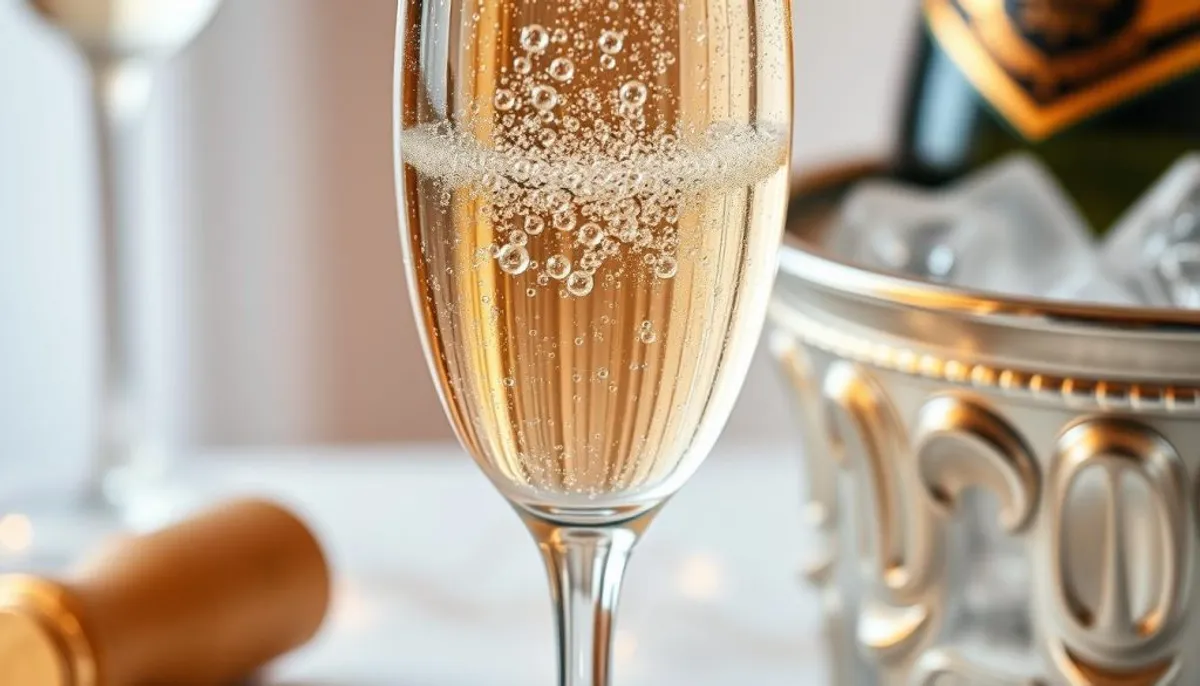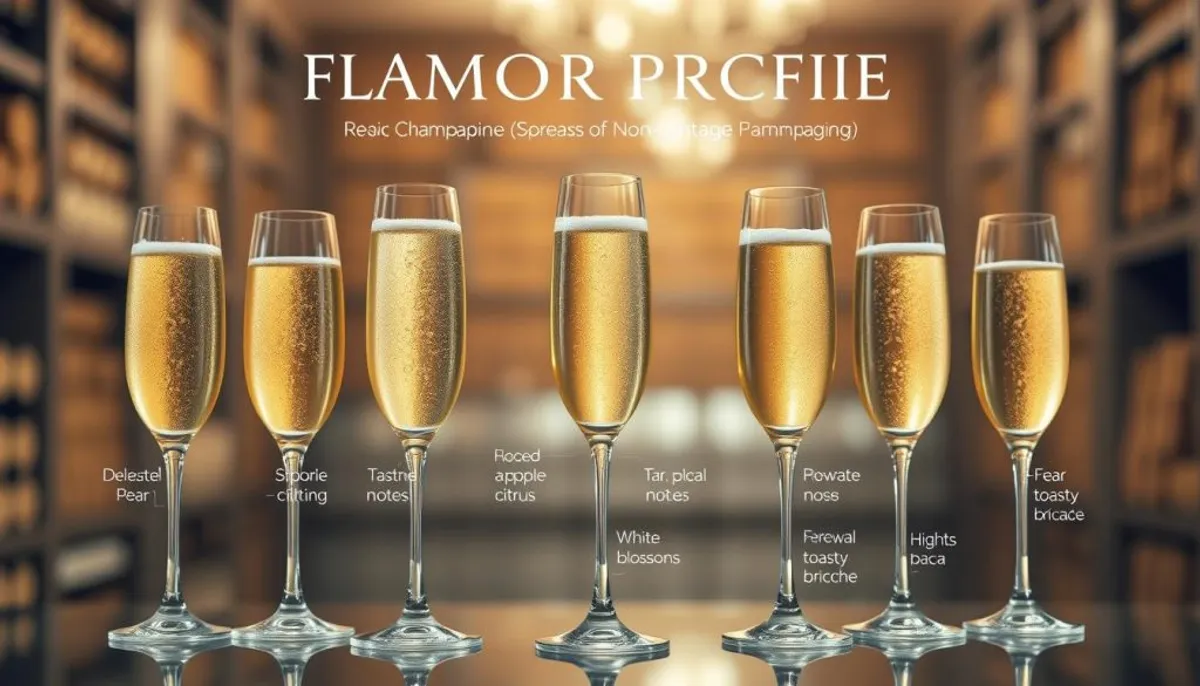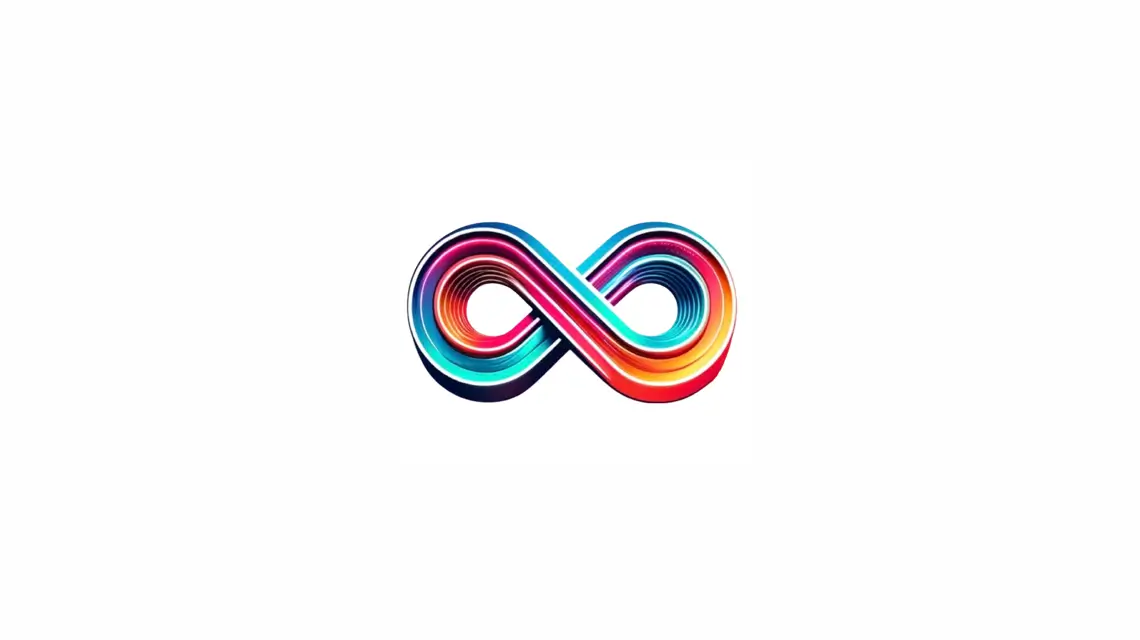Explore the realm of Non Vintage Champagne, a cornerstone in France’s Champagne region. This classic variety, accounting for the majority of wines from this esteemed area, offers a consistent quality and unmatched value to connoisseurs.
Commonly referred to as ‘Brut Réserve’, ‘Brut Classic’, or simply ‘Brut’, Non Vintage Champagnes are crafted for immediate consumption. They are ideal for celebrations, as gifts, and at events where time is of the essence, allowing for a quick yet satisfying tasting experience.

The creation of Non Vintage Champagnes is a harmonious blend of art and science. Producers typically mix between 50% and 80% of a single base year with reserve wines from past harvests. This method ensures a consistent flavor profile year after year, despite seasonal fluctuations.
The recent harvests in 2018, 2019, and 2020 have gifted winemakers with superior base wines. NVs from 2018 are characterized by their roundness and sunny notes, while those from 2019 boast greater intensity and elegance. Skilled cellar masters adeptly combine these traits to craft champagnes that highlight the finest aspects of each vintage. As we celebrate the achievements of the class of [year] graduation, these exceptional blends showcase the artistry and dedication of the winemakers.
Key Takeaways
- Non Vintage Champagne is the largest category in Champagne production
- These champagnes offer consistent quality and exceptional value
- Most producers use 50-80% of a single base year in their blends
- Recent outstanding harvests (2018-2020) have enhanced NV Champagne quality
- Blending is crucial in maintaining a consistent house style
- Non Vintage Champagnes are designed for immediate enjoyment
- They’re ideal for celebrations, gifting, and events
Understanding the Essence of Non Vintage Champagne
Non vintage champagne is the cornerstone of many esteemed houses, showcasing their distinct style and winemaking expertise. It is a blend of wines from various years, resulting in a consistent taste that reflects the house’s unique essence.
The Base Vintage Concept
The base vintage is the core of non vintage champagne, making up 50-80% of the final blend. This crucial element greatly influences the wine’s character. For example, a 2018 base vintage might produce champagnes with a rounder, sunnier taste. In contrast, a 2019 base could yield more intense and refined champagnes.
Role of Reserve Wines
Reserve wines are essential in crafting non vintage champagne. They are wines from past years, preserved to add depth and consistency to the blend. Houses like Louis Roederer maintain a perpetual reserve system since 2012, fostering complexity in their cuvées.
Production Methods and Techniques
Winemaking techniques differ among champagne houses, each aiming to create a unique style. Some aim for light, bright profiles, while others seek depth and complexity. For instance, Charles Heidsieck has increased the reserve wine percentage in their blends, enriching the non vintage champagnes.
| House | Unique Approach |
|---|---|
| Bruno Paillard | Includes disgorgement information since 1983 |
| Bollinger | PN series highlighting a particular village each year |
| Piper-Heidsieck | Essentiel Blanc de Noirs created in 2019 |
The art of champagne blending is constantly evolving. Houses like Ruinart are adapting to climate change with their Blanc Singulier cuvée. Laurent-Perrier, on the other hand, is focusing on heritage-inspired blending techniques. These innovative methods highlight the dynamic nature of non vintage champagne production.
The Art of Blending in Champagne Making
Champagne blending is a sophisticated art form, merging wines from various harvests to forge a consistent house style. This meticulous process involves the selection and combination of wines from different years and vineyards, often overseen by a skilled cellar master. The aim is to achieve a harmonious balance.
Multiple Harvest Integration
Champagne houses employ a vast array of base wines in their non-vintage cuvées. Some producers blend up to 100 different wines, while others, like Krug, use 120 base wines from ten or more years for their Grande Cuvée. This approach enables winemakers to overcome vintage variations, ensuring quality across all years. Additionally, many champagne houses showcase photogenic champagne bottles that enhance the visual appeal of their offerings.
Balance and Consistency
The objective of champagne blending is to achieve balance and consistency. Winemakers typically blend Chardonnay (30% of vineyard surface), Pinot Noir (38%), and Pinot Meunier (31%) grapes. Reserve wines from previous years are added to enhance roundness and complexity. This careful balance ensures the signature taste of each house, despite yearly variations in grape quality.
House Style Development
Developing a unique house style is essential in champagne making. Each producer strives to create a distinctive flavor profile that embodies their brand. For instance, some houses craft Blanc de Blancs using 100% Chardonnay, while others produce Blanc de Noirs from 100% Pinot Noir. The blending process requires adapting to climate changes while respecting the house style. This ensures each cuvée reflects the brand’s identity and maintains quality across different vintages.
Quality Markers in Non Vintage Champagne
In evaluating champagne quality, several critical elements emerge. Fine bubbles are a quintessential characteristic of outstanding non-vintage champagnes. These minute, enduring bubbles evoke a joyous effervescence, delightfully caressing the palate. The equilibrium of flavors is paramount, with exemplary champagnes presenting a symphony of fruit, acidity, and yeast nuances. Additionally, checking lcbo champagne reviews can provide valuable insights into the best options available.
The flavor spectrum of non-vintage champagnes is remarkably diverse, spanning from crisp and mineral to opulent and toasty. Regardless of the style, superior champagne should imbue a refreshing and clean sensation on the palate. It’s noteworthy that age does not necessarily correlate with quality. Young non-vintage champagnes, notably those from sunny vintages like 2018 and 2019, can be incredibly delectable.
| Quality Indicator | Description |
|---|---|
| Bubble Size | Fine, persistent bubbles |
| Flavor Balance | Harmonious blend of fruit, acidity, and yeast |
| Palate Feel | Clean and refreshed after tasting |
| Flavor Spectrum | Ranges from lean and mineral to rich and toasty |
It’s important to remember that non-vintage champagnes constitute the bulk of production. These blends exemplify the winemaker’s artistry in crafting a consistent house style across different vintages. When choosing a bottle, focus on these quality indicators to guarantee a memorable champagne experience.

The Perpetual Reserve System
Champagne houses have mastered the art of blending through the perpetual reserve system. This method, akin to the solera system, crafts a multi-vintage cuvée. It adds depth to non-vintage champagnes, elevating their complexity.
Solera-Style Aging
The perpetual reserve system involves a single wine, continuously added to and drawn from year to year. This process harmonizes aged and youthful characteristics in their blends. Producers like Drappier and Laherte Frères specialize in champagnes from these perpetual cuvées.
Impact on Flavor Complexity
This unique aging method significantly enhances flavor complexity. By blending wines from various vintages, producers create a harmonious blend, often resulting in a luxury champagne blend that showcases the best qualities of each year, resulting in a champagne with greater depth and nuance than single-vintage offerings.
Major Houses Using This Method
Several renowned champagne houses have adopted the perpetual reserve system. Louis Roederer, Bollinger, and Billecart-Salmon employ complex systems stored in large oak casks. These houses maintain extensive libraries of reserve wines, with some storing up to 10 choice vintages.
| Champagne House | Reserve Wine Usage | Storage Method |
|---|---|---|
| Charles Heidsieck | 40% reserve wine | Average age of 10 years |
| Krug | Up to 13 vintages | Library of reserve wines |
| Louis Roederer | 10 choice vintages | Huge oak barrels |
| Devaux | Multiple vintages | Oak barrels, stainless steel, solera system |
The perpetual reserve system ensures champagne houses maintain consistency and quality in their non-vintage offerings. Each bottle reflects the unique character of their champagne brand identity, showcasing their expertise.
Storage and Temperature Requirements
Ensuring the quality and flavor of champagne necessitates proper storage. Non-vintage Champagnes can remain unopened for three to four years, whereas vintage cuvées can last five to ten years. The optimal storage temperature is between 10°C to 13°C (50°F to 55°F).
Serving temperature is equally important, with champagne best enjoyed at 8°C to 10°C (46°F to 50°F). This temperature range preserves the effervescence and enhances the flavors. Freezing champagne can harm the delicate bubbles and alter its taste.
To preserve champagne, store bottles horizontally in a cool, dark environment with 70-85% humidity. This method keeps the cork moist, preventing oxidation. Once opened, champagne can remain fresh for three to five days when stored in the fridge with a hermetic cork.
| Storage Type | Temperature | Duration |
|---|---|---|
| Long-term Storage | 10°C – 13°C | 3-4 years (Non-vintage), 5-10 years (Vintage) |
| Short-term Storage | 8°C – 10°C | Few days |
| Serving Temperature | 8°C – 10°C | Immediate consumption |
To fully appreciate the taste of champagne, serve it in a tulip-shaped glass. This glass shape optimizes the development of aromas while maintaining the effervescence. Adhering to proper storage and serving techniques is essential for enhancing your champagne experience.
Tasting Notes and Flavor Profiles
Non-Vintage Champagne presents a spectrum of flavors, turning champagne tasting into a thrilling adventure. The art of blending is key, merging elements to form unique and captivating combinations, enhanced by stylish event embellishments.
Primary Aromas
The primary scents of Non-Vintage Champagne are dominated by fresh fruit. Chardonnay grapes introduce a lively zest, while Pinot Noir contributes a robustness with red fruit undertones. Meunier adds a fruity softness to the ensemble.
Secondary Characteristics
As Non-Vintage Champagne ages, it reveals a depth of secondary traits. Initially, it displays brioche, dried fruits, and nuts. These evolve into gingerbread and earthy notes. Some blends even suggest spices, truffle, and tobacco.
Texture and Bubbles
The texture of Non-Vintage Champagne is crisp and refreshing. Its fine bubbles enhance the mouthfeel, making the tasting experience more enjoyable. The flavor spectrum varies from lean and mineral to rich and toasty, influenced by the base vintage and the producer’s approach.
| Champagne Type | Flavor Profile | Food Pairing |
|---|---|---|
| Blanc de Blancs | Citrus, green apples, pears, brioche | Seafood |
| Blanc de Noirs | Full-bodied, strawberry, raspberry | Red meats, dark chocolate |
| Rosé | Fruity, strawberry, raspberry, crisp acidity | Seafood, poultry, fruity desserts |

Non-Vintage Champagne Brut generally has less than 12 grams of sugar per litre. More than 90% of Champagne wines adhere to this dosage. This subtle sweetness harmonizes with the wine’s natural acidity, appealing to a broad spectrum of tastes.
Food Pairing Recommendations
Non Vintage Champagne opens up a realm of thrilling champagne pairing options, including photogenic champagne bottles. Its adaptability makes it an ideal match for diverse food combinations, resulting in unforgettable culinary experiences.Champagne’s elevated acidity and effervescence significantly boost its capacity to complement a broad spectrum of dishes. Whether it’s light appetizers or substantial main courses, this effervescent drink can significantly enhance any meal.
Traditional champagne pairings feature creamy brie or aged gouda alongside Bollinger or Laurent-Perrier. Seafood aficionados will find delight in the combination of oysters and shellfish with Ruinart Blanc de Blancs. For those who relish sushi, the synergy between Rosé Champagnes, such as Veuve Clicquot, and their preferred rolls is noteworthy. Additionally, outdoor champagne photoshoots can provide a stunning backdrop for these delightful pairings, enhancing the overall experience.
Explore unconventional pairings to astonish your palate. Consider pairing truffle popcorn with Charles Heidsieck Brut Reserve or infusing your meal with fiery dishes complemented by Pommery’s Cuvée Louise Brut Rose 2004.
| Champagne Style | Food Pairing |
|---|---|
| Non-Vintage Brut | Fried foods, potato chips |
| Blanc de Noirs | Aged gouda, cheddar |
| Blanc de Blancs | Creamy cheeses, brie |
| Rosé | Roast chicken, duck |
| Demi-Sec | Fruit tarts, macarons |
Ensure your champagne is served at the optimal temperature of 45-50°F to maximize its taste and effervescence. Adhering to these guidelines will enable you to craft memorable food and champagne pairings. These will not only impress your guests but also elevate your dining experiences to new heights.
Price Points and Value Assessment
Champagne prices span a broad spectrum, catering to diverse budgets and celebrations. The market, estimated at $7.3 billion in 2023, is projected to swell to $11.9 billion by 2033. This expansion underscores a rising interest in various price tiers, making a sampen price comparison essential for buyers.
Entry Level Options
Entry-level champagnes, priced around $30, strike a balance between affordability and quality. These bottles account for 50% of the market’s revenue, appealing to the middle class. They offer a glimpse into luxury at a more accessible price.
Premium Selections
Premium champagnes, starting at $100, encompass single vineyard, vintage, or tête de cuvée labels. Grower champagnes, such as M. Brugnon or Paul Launois, showcase unique terroir expressions. They attract connoisseurs seeking distinct flavors.
Investment Worthy Bottles
Prestigious labels like Krug and Salon are coveted by collectors and investors. These rare champagnes, available only in exceptional vintages, command substantial prices and potential returns. Platforms like Wine Owners facilitate the evaluation of market values, with some users reporting profits exceeding 50% on champagne sales.
| Category | Price Range | Market Share |
|---|---|---|
| Entry Level | $30 – $100 | 50% |
| Premium | $100 – $500 | 35% |
| Investment | $500+ | 15% |
Leading Non Vintage Champagne Houses
The realm of champagne brands is a rich tapestry of top producers and renowned houses. From large-scale operations to boutique vintners, each contributes its unique flair to non-vintage champagne production.
Moët & Chandon, Laurent-Perrier, and Taittinger are giants in the industry. These champagne brands are celebrated for their consistent quality and widespread availability. They excel in blending, crafting flavors that champagne aficionados can trust year after year.
Charles Heidsieck and Lanson are notable for their transparency. These houses offer detailed insights into their base vintages, revealing the craftsmanship behind each bottle.
For those in search of unique terroir expressions, smaller producers and grower champagnes like M. Brugnon and Paul Launois present exciting choices. These boutique houses highlight the distinct characteristics of specific vineyard plots, resulting in champagnes with a strong sense of place. To navigate this diverse landscape, a sparkling wine guide can be invaluable for understanding the nuances and selections available.
At the pinnacle of the champagne world are prestigious houses like Krug and Salon. These renowned houses produce highly sought-after bottles that command premium prices. Their non-vintage offerings are crafted with meticulous attention to detail, often featuring extended aging periods that result in complex, nuanced flavors.
| House Type | Examples | Known For |
|---|---|---|
| Large Houses | Moët & Chandon, Laurent-Perrier, Taittinger | Consistent quality, wide availability |
| Transparent Houses | Charles Heidsieck, Lanson | Detailed base vintage information |
| Small Producers | M. Brugnon, Paul Launois | Unique terroir expressions |
| Prestigious Houses | Krug, Salon | Premium, complex flavors |
Conclusion
Non Vintage Champagne is the bedrock of the sparkling wine realm, presenting a harmonious mix of reliability and excellence. The art of selecting champagne transcends mere choice; it delves into the complex craftsmanship behind each effervescent creation. Winemakers meticulously blend various vintages and incorporate reserve wines, demonstrating their mastery in forging a consistent style year after year. Additionally, the appeal of photogenic champagne bottles adds an aesthetic dimension to the enjoyment of these exquisite beverages.
In champagne appreciation, quality assessment is about discerning the subtleties that distinguish each house. The spectrum ranges from the refined Blanc de Blancs from premier cru regions to the robust Blanc de Noirs, each offering a distinct tasting journey. The aging process, spanning from 12 months for NV to several years for vintage Champagnes, is pivotal in refining the flavors and aromas that aficionados cherish.
The realm of Champagne is expansive and diverse, catering to every taste and event. From the dry “Brut nature” to the sweeter “Doux” varieties, there’s a Champagne for every palate. The increasing demand for guides and articles on champagne tasting and pairing underscores a rising interest in this effervescent drink. Whether you’re embarking on your first champagne journey or have been a connoisseur for years, the path of champagne appreciation is a continuous exploration, brimming with bubbles, history, and enduring elegance.
RelatedRelated articles



